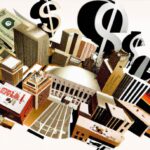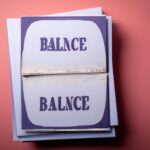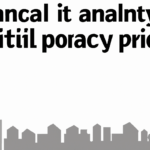Fiscal policy refers to government decisions about spending and taxing. It aims to influence the economy. Governments use fiscal policy to stimulate economic growth or control inflation. By adjusting spending levels or tax rates, they can affect the overall demand for goods and services. Policymakers make these decisions based on economic conditions. Expansionary fiscal policy means increased government spending or reduced taxes to boost activity. Conversely, contractionary fiscal policy focuses on cutting spending or increasing taxes to cool down an overheated economy. The effectiveness of fiscal policy depends on how promptly and appropriately it is implemented in response to changing economic conditions.
Table of Contents
- Components of Fiscal policy
- Definition of Fiscal policy
- Impact of Fiscal policy
- Objectives of Fiscal policy
- Tools of Fiscal policy
(Introduction to Fiscal Policy)
Fiscal policy involves the government’s decisions on taxation and spending to influence the economy. By adjusting taxes and spending levels, the government aims to achieve economic objectives like controlling inflation or boosting economic growth. It is a powerful tool in shaping the overall economic landscape. Fiscal policy can be expansionary or contractionary, depending on the economic conditions. During economic downturns, governments may increase spending or reduce taxes to stimulate growth. Conversely, during periods of high inflation, fiscal policy may aim to reduce aggregate demand. These policies impact individuals and businesses, shaping their behavior and influencing overall economic performance. The effectiveness of fiscal policy depends on various factors, including timing, magnitude, and public expectations. Coordination between fiscal and monetary policy is crucial for achieving desired outcomes. When implemented effectively, fiscal policy can help stabilize the economy and promote long-term growth. However, there are also challenges and limitations associated with fiscal policy, such as political constraints and budgetary pressures. Overall, fiscal policy plays a significant role in shaping the economic landscape, impacting individuals, businesses, and the overall prosperity of a nation.
Components of Fiscal policy
Fiscal policy, a vital tool in economic management, comprises various components that governments manipulate to influence the economy. These components are like puzzle pieces fitting together to shape a country’s fiscal landscape.
Firstly, government spending is a major component of fiscal policy. When the government injects money into sectors such as infrastructure, healthcare, or education, it aims to stimulate economic growth and employment opportunities. The impact is tangible – roads bustling with construction workers, hospitals being upgraded with cutting-edge equipment – all funded by the government’s allocation of resources.
Secondly, taxes play an equally crucial role in fiscal decision-making. By adjusting tax rates on individuals and corporations, governments can alter disposable income levels and business investments. Tax policies not only fund public programs but also redistribute wealth among citizens. Picture families delighted by tax cuts leading to more dollars for daily expenses or businesses expanding their operations due to lower corporate tax burdens – emotions run high when people feel the direct effects of taxation changes.
Moreover, another key aspect of fiscal policy lies in borrowing and debt management. Governments often resort to issuing bonds or taking loans to finance projects beyond current revenue capacities. This strategic move influences interest rates and shapes long-term financial stability. Imagine policymakers juggling numbers on spreadsheets deciding how much debt is sustainable without burdening future generations excessively – it’s a balancing act that evokes responsibility mixed with foresight.
Furthermore, automatic stabilizers form an inherent part of fiscal policy dynamics. During economic downturns, social welfare programs automatically kick in (such as unemployment benefits) while tax revenues decrease due to lower incomes—softening the blow for affected individuals while maintaining consumption levels where possible.
In conclusion,
the components of fiscal policy work hand-in-hand like gears in a clock mechanism; each turn affecting the other yet integral for smooth operation – from spending fueling growth prospects through stimulus packages
to taxes sculpting income distribution channels;
borrowings shaping tomorrow’s budget realities
and stabilizers cushioning society during turbulent times.
It’s this intricate dance between different elements that determines just how effectively governments can steer their economies towards prosperity amidst ever-changing global winds.
Definition of Fiscal policy
Fiscal policy is like the financial GPS of a country. It’s all about how the government manages its spending, taxation, and borrowing to influence the economy’s direction. Imagine it as a big economic remote control that governments can use to either pump up a sluggish economy or cool down an overheated one.
When times are tough – maybe there’s high unemployment or businesses are struggling – fiscal policy might involve cutting taxes so people have more money to spend. Or, the government could increase its own spending on infrastructure projects, which creates jobs and gets money flowing again in the economy.
Conversely, if things are getting too hot – inflation creeping up or everyone buying houses they can’t afford – fiscal policy may mean raising taxes to take some cash out of circulation. The idea is to slow down consumer spending and keep prices stable.
One big role of fiscal policy is balancing short-term goals with long-term needs. Sure, they want folks employed today but also need healthy public finances for tomorrow’s challenges. Balancing act? You betcha.
Now here’s where emotions come into play: imagine you’ve lost your job in an economic downturn. Your bills pile up faster than you empty your fridge at midnight after a party – scary stuff! This is when effective fiscal policies swoop in like superheroes (with less spandex). They provide relief by stimulating growth through tax cuts or job-creating initiatives.
On the flip side, think about feeling those price tags rising faster than grandma tells her stories – not pleasant! That’s when well-timed tightening of belts via increased taxes helps curb excesses before things go haywire financially for individuals and businesses alike.
The beauty of fiscal policies lies not just in their numbers but in their real impact on everyday lives; it determines whether someone keeps their home during rough patches or sees hopes dashed due to spiraling costs caused by unchecked inflation trends.
In essence, fiscal policy isn’t just abstract theories debated over coffee breaks; it’s concrete actions that shape economies’ destinies while impacting each person differently based on circumstances beyond mere statistics—a delicate dance between present struggles and future prosperity painted against an ever-changing economic canvas.
Impact of Fiscal policy
Fiscal policy, the government’s use of spending and taxation to influence the economy, is like a powerful tool in shaping a country’s financial landscape. Its impact resonates far and wide, affecting businesses, individuals, and even the overall economic health.
When governments decide to increase spending on infrastructure projects or cut taxes for households, it’s like injecting a shot of adrenaline into the economy. The increased government expenditure stimulates demand by creating job opportunities and putting more money in people’s pockets. This can lead to a surge in consumer spending as people feel more financially secure.
Conversely, if authorities opt to raise taxes or reduce public expenditure during times of overheating economy or high inflation rates, this move helps cool down an excessively buoyant market. It curbs excessive spending patterns that could fuel inflationary pressures. By reigning in excesses through fiscal measures, countries aim for stability rather than boom-and-bust cycles.
In times of recession or economic downturns like what we experienced recently due to global crises such as pandemics or financial meltdowns – fiscal policies can be a lifeline for struggling citizens and businesses alike. Governments may ramp up public spending initiatives while cutting taxes to bolster demand when private sector activities falter.
However beneficial these interventions might sound on paper though they are not without their challenges too—increasing government debts being one significant concern.
As policymakers seek equilibrium between short-term stimulus effects and long-term debt sustainability fears loom large overhead.
But at its core lie human stories; families saved from poverty traps by social welfare programs funded via fiscal channels,
Small enterprises finding footing amidst storms through targeted tax reliefs,
Individuals breathing easier with lowered income tax burdens – these direct impacts form just part of how deeply fiscal decisions touch lives daily.
It underscores how vital understanding these policies are beyond mere numbers – they’re woven intricately into our societal fabric.
So next time you hear about changes in government budgets or tax laws take note- those alterations ripple outwards impacting countless lives sometimes felt subtly other times drastically but always leaving indelible marks on us all across board!
(Fiscal & Monetary Policy – Macro Topic 5.1)
Objectives of Fiscal policy
Absolutely, let’s dive into the objectives of fiscal policy! Fiscal policy is like a toolbox for governments to manage their economy. It involves how they tax and spend money to influence economic activity. Now, when it comes to the objectives of fiscal policy, there are several key goals that policymakers aim to achieve.
One primary objective is ensuring economic stability. Governments use fiscal policy tools like taxation and government spending to help stabilize fluctuations in the business cycle. During times of recession or high unemployment rates, they may increase spending or cut taxes to stimulate demand and boost economic growth.
Another crucial goal is achieving full employment. By implementing expansionary fiscal policies during periods of low employment, governments can create jobs through infrastructure projects or other forms of public spending. This helps reduce unemployment rates and fosters a more prosperous society where people have meaningful work.
Moreover, promoting economic growth is a fundamental objective of fiscal policy. Governments seek to encourage long-term sustainable growth by investing in education, healthcare, research and development, and other areas that enhance productivity and innovation within the economy.
Additionally, achieving price stability is vital for maintaining healthy economic conditions. Through fiscal measures such as adjusting tax rates or controlling government expenditures, authorities aim to keep inflation levels in check so that prices remain relatively stable over time.
Furthermore, income redistribution plays a role in shaping fiscal policies too. Governments utilize taxation schemes and social welfare programs to redistribute income among different segments of society—helping reduce inequality levels while ensuring basic needs are met for all citizens.
Lastly but not leastly (if that’s even a word!), another critical objective includes reducing external imbalances like trade deficits by influencing exchange rates through monetary tools combined with international cooperation efforts aimed at fostering balanced global trade relationships—a complex puzzle requiring strategic coordination on various fronts!
In essence: The objectives of fiscal policy are diverse yet interconnected—the ultimate goal being creating an environment conducive towards sustained prosperity where individuals thrive collectively!
Tools of Fiscal policy
Fiscal policy is like a toolbox for the government, filled with all sorts of tools designed to manage the economy. When it comes to steering the economic ship, one of the most critical toolsets in this fiscal toolbox is known as “Tools of Fiscal Policy.” These tools are used by governments to influence their economies through taxation and public spending.
Taxation is like a monetary lever that governments can pull when they want to either stimulate or cool down their economy. It’s not just about collecting revenue; it’s also about shaping behavior. By adjusting tax rates, governments can encourage people and businesses to spend more or save more, depending on what the economy needs at any given time.
Imagine tax cuts as a burst of adrenaline injected into the economic bloodstream. Lowering taxes puts more money back into people’s pockets, giving them extra cash to spend on goods and services. This surge in consumer spending can rev up economic activity, creating a domino effect where increased demand leads to higher production levels and job creation.
On the flip side, raising taxes can act as a brake pedal for an overheated economy. By taking money out of circulation through higher taxes, governments aim to reduce excessive spending that could lead to inflation or asset bubbles bursting – think of it as tapping the brakes before things get out of control.
Public spending is another potent tool wielded by governments in their fiscal arsenal. Picture it as pouring fuel onto a fire – but hopefully in a controlled manner! When times are tough economically (like during recessions), increasing government expenditure on infrastructure projects or social programs can provide much-needed stimulus by injecting funds directly into key sectors and creating jobs along the way.
However, too much public spending without adequate revenue sources can result in budget deficits piling up like unpaid bills after a shopping spree. Just like individuals need to balance their income with expenses, governments must strike a delicate equilibrium between stimulating growth and keeping debts manageable within sustainable limits.













